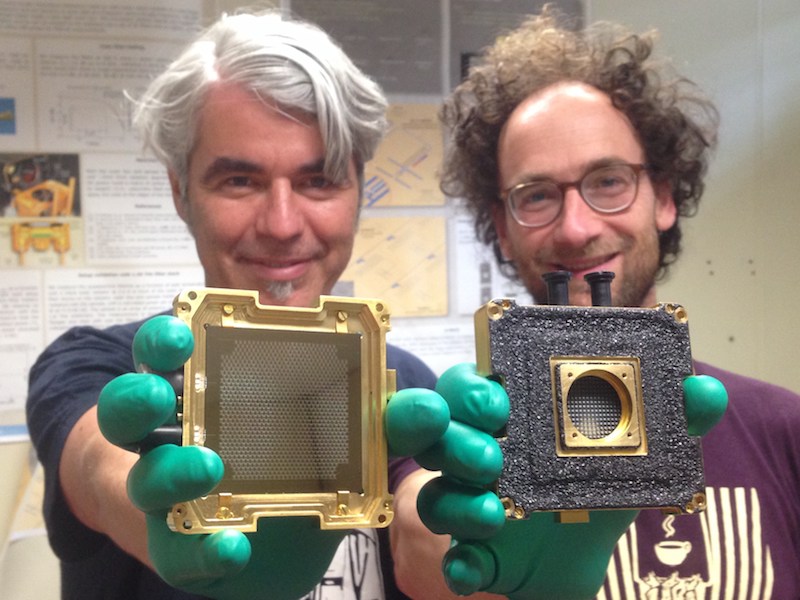Ultrasensitive detectors, reliable electronics, inventive applications

Space technology must be able to withstand the extremely harsh conditions in space. In a vacuum, exposed to highly energetic cosmic radiation and extreme temperature differences, space instruments must be capable of performing extremely precise measurements. Moreover, all of the components must be able to survive the launch and then function faultlessly for a period of five to fifteen years. SRON technology is therefore a catalyst for innovative technology that is finding a growing number of applications in society. For instance, our terahertz technology has now been launched on the market for inspection purposes.
SRON’s X-ray, submillimeter, and infrared detectors are developed to fly onboard the revolutionary space telescopes of ESA, NASA, JAXA, and other space agencies; some submillimeter/infrared cameras and on-chip instruments have been developed to be mounted on ground telescopes. We must continue to work hard on the development of new generations of detectors and the necessary read-out and control electronics. The new generation of (on-chip) spectrometers requires the development of new advanced electronics, superconducting nanotechnology, smart control software, extreme cooling technology, and novel materials. We have the necessary know how, experience, and facilities to do this.
The Technology programme is aimed at SRON’s strategic long-term plans. It is dedicated to achieving the science goals in the Astrophysics, Earth, and Exoplanets programmes, starting at low technology-readiness levels (TRLs). The ambition is that the programme enables us to:
- acquire a prime/visible hardware role in space missions
- contribute with enabling technology in space missions
- realize (early) science with new technology through demonstrators.
The research areas of the Technology programme are usually in the primary signal chain:
- detector systems, read-out
- high-contrast imaging and optics
- focal plane assembly
- instrument concept
- demonstrators to raise TRL.
An important focus of the Technology programme is the development of arrays of cryogenic detectors and their read-out. These cryogenic detector systems are the only systems reaching the sensitivity requirements for space applications. We pursue three main detector routes:
- arrays of Transition Edge Sensors (TESs) and their read-out
- arrays of Microwave Kinetic Inductance Detectors (MKIDs) and their read-out
- Hot Electron Bolometer Mixers (HEBMs), with a Quantum Cascade Laser (QCL) as local oscillator.
The latter two developments are pursued in collaboration with the Delft University of Technology. Head of the Technology programme is dr. Henk Hoever


